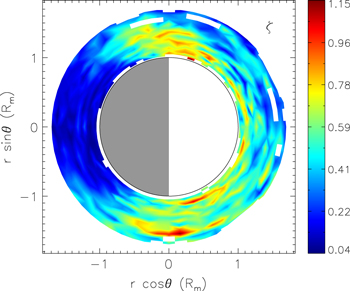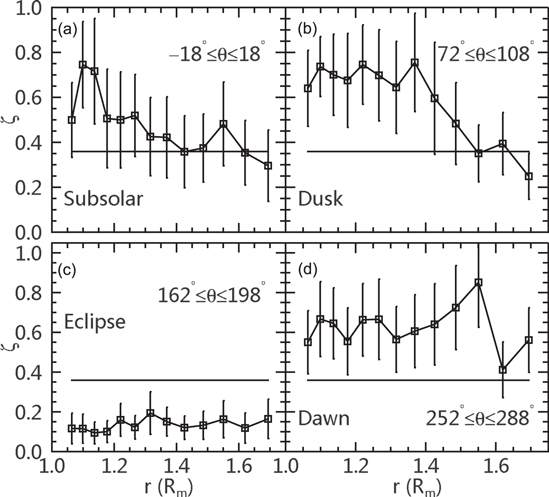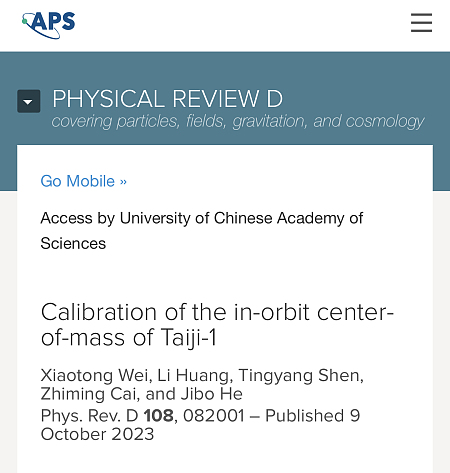Abstract
The Moon–solar wind interaction results in the formation of a complicated lunar space plasma environment. Here, we investigate the solar wind turbulence around the Moon using the magnetic field observed by the dual-probe mission Acceleration, Reconnection,Turbulence and Electrodynamics of the Moon's Interaction with the Sun (ARTEMIS). Structure functions in a time range on kinetic scales are computed to measure the scaling index ζ, the spatial distribution of which reveals the global aspects of the lunar space plasma and shows the dependence on the local instability. On the lunar nightside, in the plasma void, the dominating magnetic pressure over the thermal pressure restrains the turbulence, and a quiet zone is built with , where is the scaling index in the ambient solar wind. Downstream in the lunar wake, ζ is elevated gradually and goes above at a radial distance of (lunar radius), which implies that the plasma refilling process in the lunar wake begins to generate the local turbulence. On the dayside around the subsolar point, ζ is enhanced at a low altitude of ~200 km, where the solar wind turbulence might be strengthened due to interaction with the lunar source plasma. The largest scaling indices lie around the day–night terminator with , and the observed dawn–dusk asymmetry could be an effect of the magnetic field not being parallel with the solar wind. The correspondence between the enhanced scaling index and the local instability also raises new questions about the description of solar wind turbulence.
 |  |
DOI: 10.3847/2041-8205/816/1/L3
https://iopscience.iop.org/article/10.3847/2041-8205/816/1/L3
This research work was supported by projects such as the Key Laboratory of Planetary Sciences of the Chinese Academy of Sciences, the Strategic Pilot Science and Technology Special Project of the Chinese Academy of Sciences (Class B), the National Natural Science Foundation of China, and the Special Research Fund of the National Key Laboratory.





